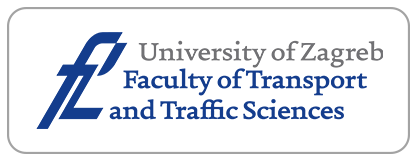Daily Trips Characteristics in Novi Sad – Gender Differences

Downloads
Modern transportation planning, building and city management tendencies are based on smart and green sustainability. Sustainable mobility and traffic safety can be improved by raising awareness of gender diversity in travel behaviour. The city of Novi Sad (Serbia) has had a tradition of traffic surveys for about 50 years. All measures for improvement of traffic in the city are based on this research. Travel characteristics in the city regarding gender differences are the source of different data, which can be based on sustainable urban mobility plans, transport demand management and gender equality levels. This paper analyses mobility, modal split and distribution by travel reason as a function of gender. Results were gathered using travel diaries (collected by household surveys) in the Smart plan of Novi Sad. The discussion is based on a descriptive analysis of the basic travel characteristics as a function of gender and a comparison with a previous traffic study – Nostram. The findings of the research indicated that there is a greater prevalence of male employment and higher usage of passenger vehicles among men than among women. Women use alternative modes of transport (walking, public transport and bicycle). Women do not have precise peak hours, while trips are scattered even outside peak hours. Their trips are more related to daily duties than entertainment.
Downloads
Urbanism Public Enterprise, Traffic study of Novi sad with the traffic management dynamics (Saobraćajna studija Grada Novog Sada sa uređenjem saobraćaja), Novi Sad, Serbia, 2009.
Faculty of technical sciences & ADOMNE d.o.o., Smart Plan - The first phase, Novi Sad, Serbia, 2018.
Faculty of technical sciences & ADOMNE d.o.o., Smart Plan - The second phase, Novi Sad, Serbia 2019.
Basarić V, et al. Gender and age differences in the travel behavior – A Novi Sad case study, Transportation Research Procedia. 2016;14,4324-4333. DOI: 10.1016/j.trpro.2016.05.354.
Vujičić A, Mirović V, Mitrović Simić J, Razić S. Gender mobility in cities – Daily trip rates (Izazovi dnevne mobilnosti u gradovima – rodna podjela). 13. Konferencija o tehnikama saobraćajnog inženjerstva TESi 2022, 13-14 Oct. 2022, Vrnjačka Banja, Serbia. 2022;249-255. DOI: 10.37528/FTTE/9788673954585/TESi.2022.004.
Razić S. Gender aspect of urban mobility - A case study of Novi Sad, Master thesis (Rodni aspekt urbane mobilnosti - studija slučaja Novog Sada, Master rad). Faculty of Technical Sciences, Novi Sad, 2023.
European Union, European institute for gender equality. https://eige.europa.eu/ [Accessed 24th April 2022].
Republic Institute for Statistics of the Republic of Serbia (Republički zavod za statistiku). https://data.stat.gov.rs/ [Accessed at 24th April 2022].
United Nations, Department of economic and social affairs, sustainable development. https://sdgs.un.org/goals [Accessed at 24th April 2022].
European Commission, EU Sustainable & Smart mobility strategy, European Commission, 2020.
SeConS Development Initiative Grop, Gender equality in transport in Serbia (Grupa za razvojnu inicijativu – Rodna ravnopravnost u saobraćaju u Srbiji), 2019.
Miletić GM, Gašparović S, Carić T. Analysis of socio-spatial differentiation in transport mode choice preferences. Promet – Traffic&Transportation. 2017;29(2):233-242. DOI: 10.7307/ptt.v29i2.2198.
Scheiner J, Holz-Rau C. Gender structures in car availability in car deficient households. Research in Transportation Economics. 2012;34(1):16-26. DOI: 10.1016/j.retrec.2011.12.006.
CIVITAS – Policy note, Smart choices for cities Gender equality and mobility: mind the gap!, 2014.
Goverment of United Kingdom, National Statistics, Department for Transport, National Travel Survey, 2017.
Dirección General de Programación Económica del Ministerio de Fomento, Encuesta de Movilidad de las Personas Residentes en España, 2008.
Nosal HK, Puławska OS. The travel behaviour of polish women and adaptation of transport systems to their needs. Sustainability. 2021;13(5):2693-2720. DOI: 10.3390/su13052693.
Colley M. Gender differences in the commute to school and work through time and space in the greater Toronto and Hamilton area, Canada, Department of Geography, University of Toronto, 2017.
Hibino N, Yamashita Y, Okunobo N. Fundamental analysis of trip patterns in urban area considering household composition in addition to gender and age. Transportation Research Procedia. 2020;8:1583-1591. DOI: 10.1016/j.trpro.2020.08.200.
Goel, R, et al. Gender differences in active travel in major cities across the world. Transportation. 2022;50(1):733-749. DOI: 10.1007/s11116-021-10259-4.
OECD, Understanding urban travel behaviour by gender for efficient and equitable transport policies, International Transport Forum, Paris, 2018.
Macedo M. et al. Differences in the spatial landscape of urban mobility: Gender and socio-economic perspectives, PLoS ONE, 2022.
Caselli F, et al. Mobility under the COVID‑19 pandemic: Asymmetric efects across gender and age. IMF Economic Review. 2021;70:105-138. DOI: 10.1057/s41308-021-00149-1.
Giscard AE. Gender, mobility, and Covid-19: The case of Belgium. Feminist Economics. 2021;27(4):1-15, DOI: 10.1080/13545701.2020.1832240.
Google maps [Accessed at July 20th 2024].
Zineb C, Boubkr A. Understanding gender, income and travel behavior. The open transportation journal. 2021;15:272-279. DOI: 10.2174/1874447802115010272.
Lucasa K, et al. Modelling the relationship between travel behaviours and social disadvantage. Transportation Research Part A: Policy and Practice. 2016;85:157-173. DOI: 10.1016/j.tra.2016.01.008.
Gorman H, et al. Older people, mobility and transport in low- and middle-income countries: A review of the research. Sustainability. 2019;11(21):6157-6173. DOI: 10.3390/su11216157.
Yingling F. Household structure and gender differences in travel time spouse/partner presence, parenthood, and breadwinner status. Transportation. 2017;44(2):271-291. DOI: 10.1007/s11116-015-9637-7.
Loo L, et al. Transport mode choice in South East Asia: Investigating the relationship between transport users' perception and travel behaviour in Malaysia. Journal of Transport Geography. 2015;46:99-111. DOI: 10.1016/j.jtrangeo.2015.06.011.
Adetunji MA. Gender travel behaviour and women mobility constraints in Ilesa, Nigeria. International Journal for Traffic and Transport Engineering. 2013;3(2):220-229. DOI: 10.7708/ijtte.2013.3(2).09.
Copyright (c) 2025 Ana VUJIČIĆ, Valentina MIROVIĆ, Jelena MITROVIĆ SIMIĆ, Nenad RUŠKIĆ

This work is licensed under a Creative Commons Attribution-NonCommercial 4.0 International License.




















